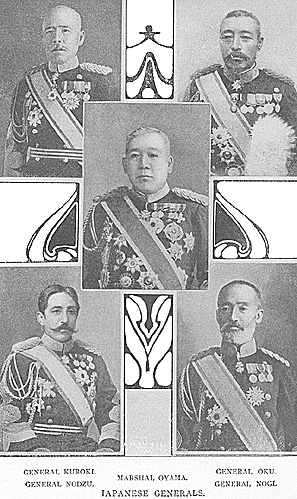
With regard to the land forces of the two belligerent Powers, it was only possible to reckon with certainty those of Japan; for it remained doubtful, until the progress of active operations revealed the facts, how much of Russia's enormous military strength had been concentrated in the Far East.
Broadly speaking, Japan could put into the field in the last resort an army of between 400,000 and 450,000 men. The standing army amounts to almost 200,000 men, and it was immediately available for mobilization. To this number another 35,000 men was added by the reserve, while the militia of all arms could be reckoned at 200,000 men.
The Japanese infantry soldier is armed with the Midji magazine rifle, and the artillery with the Arisaka quick-firing gun; but the adoption of this latter weapon has been so recent that the whole of the artillery is not yet supplied with it, and in this one respect at least the Russian gunners are believed to possess a very great advantage. The Japanese army has been organized largely on German models.
It proved its efficiency as a fighting machine in the Chino-Japanese War; while the Japanese troops that took part in the relief of the Peking Legations earned the unstinted praise of all the military experts who watched their behavior. Until the present war, however, the Japanese army had never undergone the supreme ordeal of facing a European adversary.
Back to Table of Contents -- The Russo-Japan War # 2
Back to The Russo-Japan War List of Issues
Back to MagWeb Master Magazine List
© Copyright 2005 by Coalition Web, Inc.
This article appears in MagWeb.com (Magazine Web) on the Internet World Wide Web. Other articles from military history and related magazines are available at http://www.magweb.com
